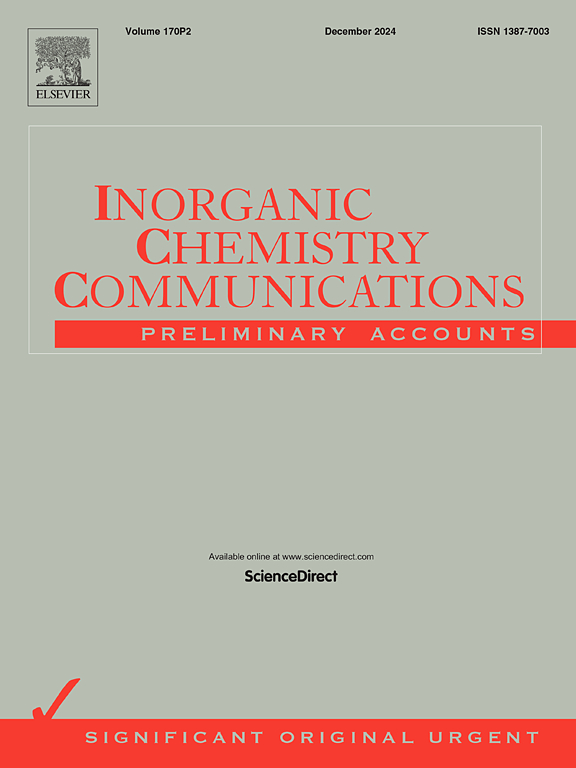Bi2S3/WO3异质结增强光催化还原Cr(VI):合成、性能和DFT研究
IF 4.4
3区 化学
Q1 CHEMISTRY, INORGANIC & NUCLEAR
引用次数: 0
摘要
为了显著提高光催化剂的光吸收能力和光生载体的透射效率,本文采用简单的溶剂热法在WO3纳米棒上制备了Bi2S3纳米片,并研究了不同反应温度(80°C、100°C、120°C和140°C)对Bi2S3/WO3异质结微观形貌、光电化学性能和光催化还原Cr(VI)性能的影响。结果表明,Bi2S3/WO3(100°C)异质结具有最佳的光吸收能力、光电流密度和光催化性能,在100 min内对Cr (VI)的还原率高达69.1%,一次还原系数高达0.0120 min−1,是原始WO3的3倍。此外,通过DFT计算阐明了光生载流子的输运机理,提出了WO3与Bi2S3之间z型异质结的光催化机理。本研究为开发其他具有高效异质结构的光催化剂来还原工业废水中的Cr (VI)提供了新的契机,并为构建z型异质结光催化剂提供了一些相关的见解,旨在解决迫在眉睫的环境污染问题。本文章由计算机程序翻译,如有差异,请以英文原文为准。

Bi2S3/WO3 heterojunction for enhanced photocatalytic Cr(VI) reduction: Synthesis, performance, and DFT study
In order to significantly improve the light absorption capacity of the photocatalyst and the transmission efficiency of photogenerated carriers, in this work, Bi2S3 NRs(Nanosheets) were prepared on WO3 NSs(Nanorods) by a simple solvothermal method, and the influence of different reaction temperatures (80 °C, 100 °C, 120 °C and 140 °C) on the microscopic topography, photoelectrochemical properties and photocatalytic reduction of Cr(VI) properties by Bi2S3/WO3 heterojunction were investigated. The results showed that Bi2S3/WO3(100 °C) heterojunction exhibit the best light absorption capacity, photocurrent density and photocatalytic performance, with a reduction rate of up to 69.1 % for Cr (VI) within 100 min and a primary reduction coefficient up to 0.0120 min−1, surpassing the pristine WO3 by 3 times. In addition, the transport mechanism of photogenerated carriers was clarified by DFT calculations, and the photocatalytic mechanism of Z-scheme heterojunction between WO3 and Bi2S3 was put forward. This research provides a new opportunity on the development of other photocatalysts with efficient heterostructures for reduction of Cr (VI) in industrial wastewater, and provides several relevant insights for the construction of Z-scheme heterojunction photocatalysts, aiming to solve urgent environmental pollution issues.
求助全文
通过发布文献求助,成功后即可免费获取论文全文。
去求助
来源期刊

Inorganic Chemistry Communications
化学-无机化学与核化学
CiteScore
5.50
自引率
7.90%
发文量
1013
审稿时长
53 days
期刊介绍:
Launched in January 1998, Inorganic Chemistry Communications is an international journal dedicated to the rapid publication of short communications in the major areas of inorganic, organometallic and supramolecular chemistry. Topics include synthetic and reaction chemistry, kinetics and mechanisms of reactions, bioinorganic chemistry, photochemistry and the use of metal and organometallic compounds in stoichiometric and catalytic synthesis or organic compounds.
 求助内容:
求助内容: 应助结果提醒方式:
应助结果提醒方式:


